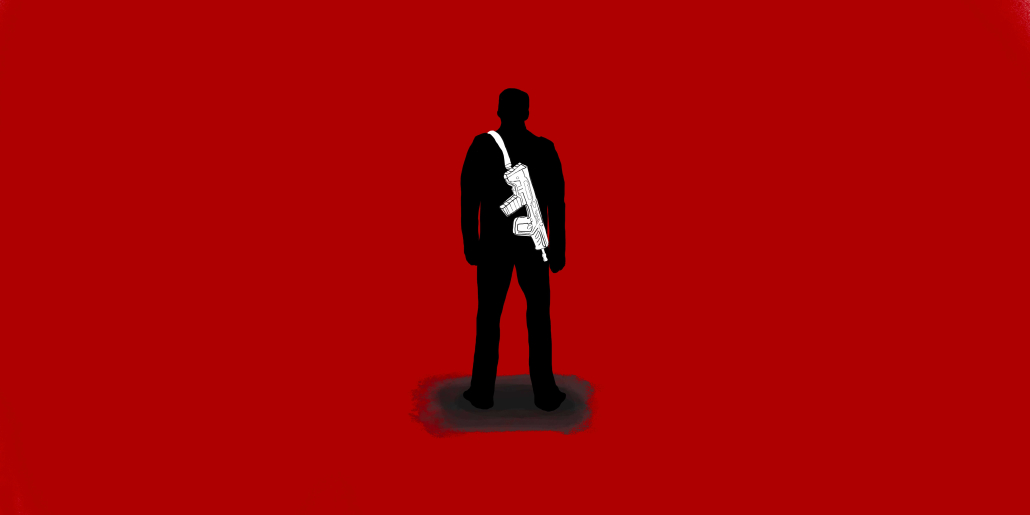Protecting people should be L.A.’s first priority, not guns

Content warning: This article contains references to gun violence and mass shootings.
Besides sharing a healthy football rivalry, having vigorous school spirit and residing in the city of Los Angeles, USC and UCLA have another thing in common: the active and continued threat of gun violence on both campuses.
According to Newsweek, former UCLA philosophy lecturer Matthew Harris sent a threatening video to members of the UCLA community that referenced a mass shooting Jan. 31. The message disrupted campus at UCLA and left students and faculty unsettled and vulnerable. Though Harris is currently detained in Colorado, that doesn’t stop the imminent threat of mass shootings lingering in the minds of those living in L.A.
Harris’ threats of gun violence is only one of many disturbing cases and reveals an alarming pattern of gun violence in L.A. Last semester, USC also received anonymous phone calls threatening campus with gun violence and bomb threats back in November. Though local officials deemed the threat not credible, such incidents have become too normalized in large cities such as L.A. and pose a great threat to the livelihoods of the city’s residents and college students.
Though daily Department of Public Safety logs chronicle criminal activities surrounding campus, extreme issues such as gun violence should not be normalized at USC. The commonality of crimes should not justify its presence in the city.
Many incoming students often also consider the safety of a school’s location when deciding which college to attend. Having to factor gun violence in their college decisions already indicates the severity of the continued battle against gun violence in the United States.
According to a Pew Research Center 2021 survey, nearly 50% of Americans view gun violence as a severe problem in the country. However, there remains a disturbing precedent regarding gun violence in large cities that has manifested in anxiety and fear among the student body.
In recent years, L.A. experienced a spike in gun violence. Gun violence in the city hit a 15-year high in 2021, culminating to 400 deaths in 2021 alone. Such increases in crime signal a demand for greater restrictions on gun usage and firearm possessions as well as greater regulation reflected in policy and legislation.
Helen Ubinas, a reporter for The Philadelphia Inquirer, took only seven minutes to buy an AR-15 — the same semiautomatic rifle Stephen Paddock used to kill 59 people in the deadliest mass shooting in modern American history. When purchasing something as destructive and deadly as an AR-15, it should take longer than seven minutes. Lengthy and thorough background checks ensure violent weapons end up in responsible hands, and thus should be prioritized over efficiency in delivering weapons to consumers.
The culture of American gun ownership can also be partly to blame for the raging epidemic of gun violence in cities such as L.A. The continual defense and support for greater expansion of gun access continues to polarize a country in the midst of this issue.
The same survey from the Pew Research Center showed that Americans are split on whether restricting access to guns will alleviate mass shootings. It demonstrates the dichotomized approaches to implementing remedies that will protect citizens while keeping political peace.
Our structural and systemic methods of distribution contain deadly flaws in need of remedy. Without any action, we will only continue to face unnecessary losses that continue to affect the USC community even when we don’t realize it. Such threats signal a glaring issue, and the continual ignorance of these problems will result in more traumatic events.
While no physical harm took place on UCLA’s campus, the egregious nature of the threat takes an extreme toll on the emotional and mental health of those involved. According to the American Psychology Association and a 2019 survey conducted by the Harris Poll, “more than three-quarters of adults (79%) in the U.S. say they experience stress as a result of the possibility of a mass shooting.”
While students and faculty can remain vigilant of their surroundings, not much else can be accomplished to ensure safety at the individual level. However, at federal and state levels, legal restrictions on firearms can effectively reduce the prevalence of such harms. Nonetheless, implementation of gun control passages is not enough. Even with California Proposition 63 and “the majority of California voters [who] say that they believe gun control laws are effective in reducing violent crime,” studies done by the UC Berkeley Institute of Governmental Studies, co-sponsored by the Los Angeles Times, show that confidence in such laws “has slipped.”
The conversation surrounding gun control is sticky — the fine line between freedom and safety and its ties to America’s core values makes finding solutions to mass shootings difficult and arduous to implement. Unfortunately, for both USC and UCLA, the nature of school shooting threats will most likely repeat itself in the future unless drastic action is implemented and enforced by higher municipalities.
If the history of America’s gun violence has taught us anything, proper solutions must be enacted to disrupt the deadly cycle of mass shootings. As we keep this in mind, let us not approach our current situation with fear, but rather, with hope and aspirations for a safer future.

